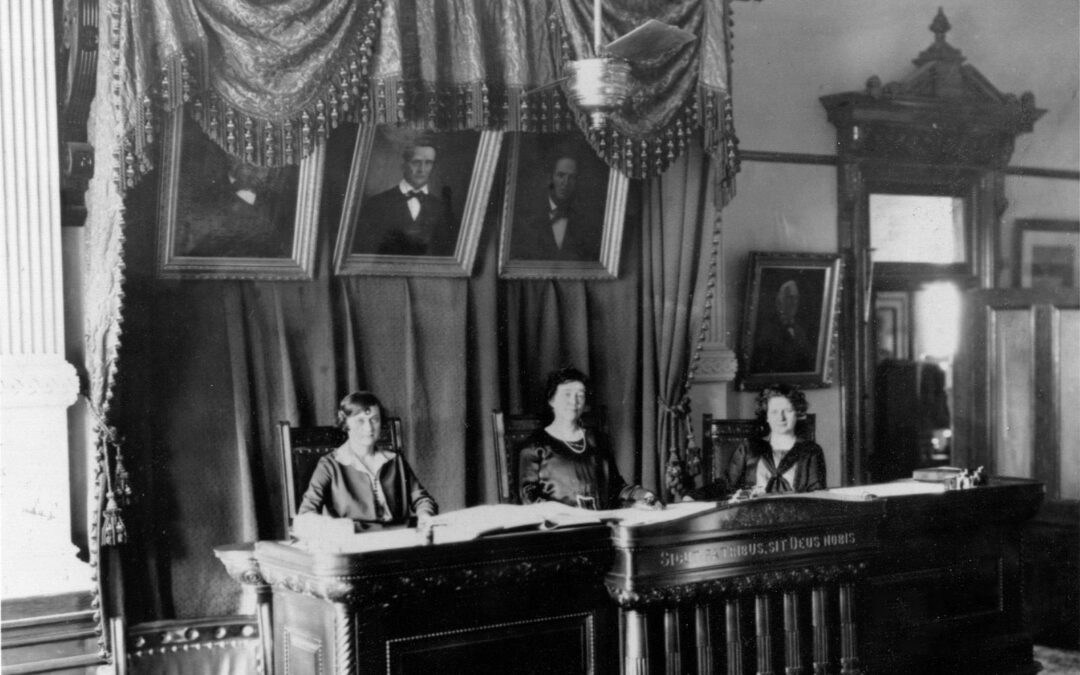Image from the Texas State Library and Archives Commission.
It was late 1924, and Texas governor Pat M. Neff had a problem. A land ownership dispute involving the Woodmen of the World, an influential men’s fraternal organization, had reached the state supreme court, and most if not all of the justices would be obliged to recuse themselves because they were members of the organization. In fact, most of the (then largely male) lawyers and judges in Texas were members, which meant that they couldn’t be appointed to hear the case in place of the supreme court judges.
That’s when Neff came up with an innovative, last-minute solution: No women were members of the Woodmen, so why not appoint a special court of all-women justices to hear the case?
It was a fitting plot point in the story of Neff’s gubernatorial tenure, since he already had a track record of appointing women to state boards and commissions, and was also the first Texas governor to employ a woman secretary. The special all-woman court convened on January 8, 1925 and sat for five months, and was the first all-woman supreme court in the history of the U.S.
The three lawyers selected for the job were Ruth Brazzil, Hattie Henenberg, and noted suffragist Hortense Ward. (Edith Wilmans, who was also a key player on the Texas suffrage stage, was originally selected, but had to step down in favor of Hattie when it was discovered she was two months’ shy of the required seven years of law practice experience required to serve.)
The court disbanded after handing down a decision in favor of the Woodmen. No woman would serve on the Texas Supreme Court again until 1982, when legendary Houston lawyer Ruby Kless Sondock was appointed by Governor William P. Clements following the death of Associate Justice James G. Denton. Today (2020) there are three women on the Texas Supreme Court: Eve Guzman, Debra Lehrmann, and Jane Bland.
Additional Learning: Texas Almanac: “Texas’s All-Woman Supreme Court”

